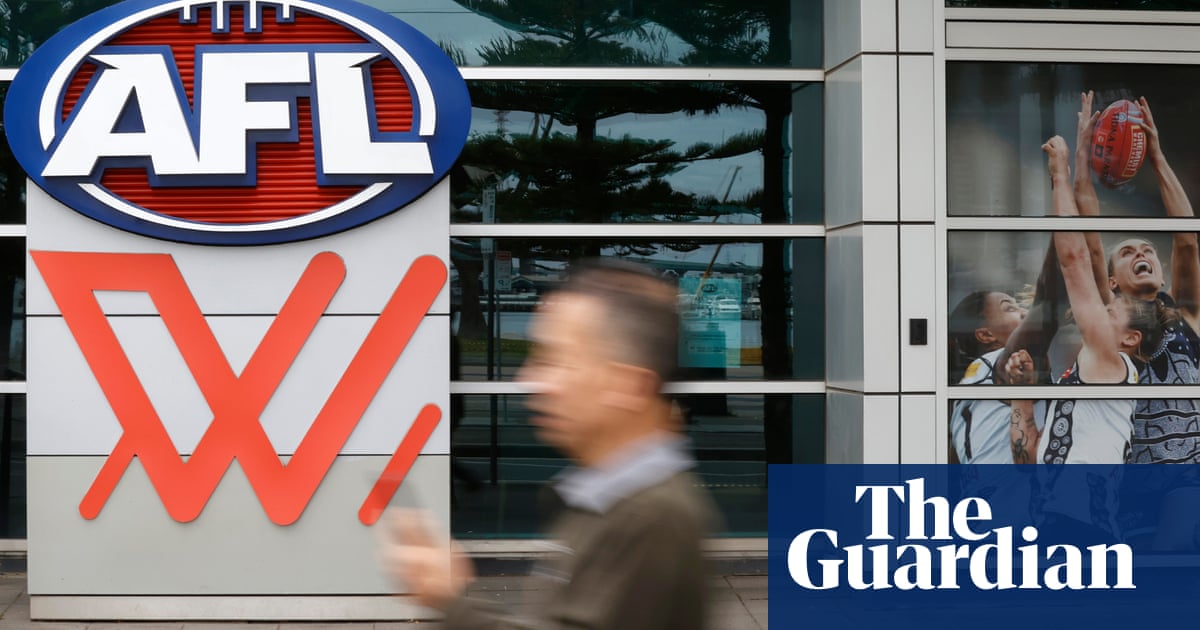Before the actual ending, and then the melee that followed the ending, there was the original ending. The studio cut. The official’s board goes up to indicate five minutes of injury time. Vitalii Mykolenko puts a cross straight out of play. Jarrad Branthwaite and Carlos Alcaraz run into each other and bang heads. Tim Iroegbunam smashes a shot into the Gwladys Street End, and almost into Gwladys Street itself. The Liverpool fans are singing about winning the league at Goodison Park. Quite a few people are leaving.
And let’s be honest here: this would also have been a fitting way for the last Goodison Park derby to end. Certainly it would have felt truer to where Everton and Liverpool are right now, at the start of 2025, a park and an ocean between them. Everton make noises, run hard, crack their whips; Liverpool shoot them in the face. Before the game, the Opta supercomputer simulated this fixture 10,000 times and gave Liverpool a 60% chance of winning. As the clock ticks over to 97 minutes, the Opta supercomputer is doing victory laps of the office and taking high-fives.
But then, as 2011’s Ashley Young hoists the ball forward, with time already on the verge of running out, a kind of madness seems to take over. A madness that seems to come from a different plane entirely, a madness of ley lines and dark secrets, a madness willed and manifested into being, a madness you can’t feed into a supercomputer. What’s the xG on a James Tarkowski volley, from an angle, under pressure, in the 98th minute, in the last Merseyside derby at Goodison Park? I don’t have a shot map or game-state model to hand. But I know it’s 1.00.
Do Everton deserve this? In a way the question makes no sense because this is a goal you cannot explain by logic, because there is no logic at work here, just a series of increasingly staggering coincidences. Michael Oliver does not blow for full time as Young lumps it forward. Abdoulaye Doucouré is not offside. Dominik Szoboszlai’s block smashes Mykolenko in the back of the neck and somehow lands at Mykolenko’s feet. Beto pushes Ibrahima Konaté and nobody notices.
In short: every bounce somehow goes the way of the team 30 league points below their opponents but who desperately need this to happen. And so the cumulative effect feels like an entirely natural progression. It was no wonder Liverpool’s players and staff exploded so uncontrollably on the final whistle: they had been dragged into a place they couldn’t explain or understand, where the normal laws of input and output did not apply. To coin a phrase, perhaps for Everton this really did mean more.
And for all the fire and the fury, there was a kind of clarity to Everton all night, even in their shakier moments. A clear gameplan: 4-4-2 off the ball, come and break us down. A clear emotional tenor, a wall of noise that stretched right back into the darkest recesses of the Bullens Road Lower, those seats where the ball disappears when it goes in the air, and whose occupants thus missed about 85% of the Sean Dyche era.
Most of all, clarity in front of goal: from Tarkowski later and Beto earlier. And what a moment this was for Beto, a striker long since written off as a £26m disappointment and yet who, when presented with a clear sight of goal, doesn’t lash, doesn’t snatch, gets his feet right and takes every last microsecond available to him. Beto has scored 11 goals in English football. But this is the one people will remember.
Of course Liverpool came not to praise Goodison, but to bury it. Alexis Mac Allister robs a cheap equaliser while Everton are still resetting. Iliman Ndiaye gets injured and goes off in tears. There are petty fouls, mistimed lunges and cards galore. And yet Mohamed Salah’s goal seems to drain the noise out of the place entirely. Suddenly Everton’s 11 men look like exactly what they are: a mixture of journeyman ardour and unfulfilled potential, a team painfully outmatched at this level.
after newsletter promotion
There are no quick fixes for this. The world’s best players do not want to come to Everton right now. The finances are still precarious. The mistakes of years past still echo through the concourses. Bad recruitment. The decision to hire survival experts, a signal to any visionary young coach that Everton will chuck everything away at the first time of trouble. Selling a 21-year-old Ademola Lookman while you hand massive wages to James Rodríguez and Dele Alli and the defence and attack remain largely unimproved: like buying designer suits but renting your underwear.
Tarkowski’s goal doesn’t undo any of these mistakes. It is worth one point and one point only. It doesn’t tell us anything new about Everton or about Liverpool. But it tells us a little about football: the game you still can’t tame. You can play with your machines, you can pore over balance sheets, you can control everything that can be controlled, and there will always be a part of it that only madness can touch.
Article by:Source: Jonathan Liew at Goodison Park












